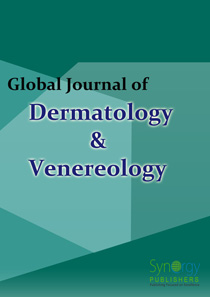
Mitochondrial Dysfunction and Tissue Alterations of Ultraviolet-Irradiated Skin in Five Different Mice Strains Pages 4-12
Adrián Friedrich, Mariela Paz, Eliana Cela, Juliana Leoni and Daniel Gonzalez Maglio
Instituto de Estudios de la Inmunidad Humoral (IDEHU – CONICET)/Cátedra de Inmunología, Facultad de Farmacia y Bioquímica, Universidad de Buenos Aires, Junín 956 4th floor (1113), Buenos Aires, Argentina
DOI: http://dx.doi.org/10.12970/2310-998X.2014.02.01.2
Download PDFAbstract: Ultraviolet radiation (UVR) effects on skin have been extensively studied. Several mice strains have been used worldwide in photobiology and photoimmunology studies. Recently, we have developed a method based on flow cytometry in order to analyze mitochondrial dysfunction and superoxide (O2•–) production ex vivo in keratinocytes isolated from irradiated-mice. This method can be helpful to evaluate mitochondrial alterations in different mice models.
In this work, we aimed to compare epidermal response to UVR in five mice strains, both pigmented and albino as well as hairy and hairless strains (SKH:1, Balb/c, C57/BL, DBA/2N and Swiss). Keratinocytes mitochondrial alterations, epidermal hyperplasia and inflammatory mediators’ production (epidermis and serum) were determined 72 hours after a 400 mJ/cm2 UV dose.
All strains showed epidermal hyperplasia and loss of mitochondrial polarization after irradiation, differing in the magnitude of the response. However, there were significant differences in the basal mitochondrial polarization between strains, showing that the metabolic state of keratinocytes may vary between them. Moreover, mitochondrial O2•– production was induced in SKH:1 and Balb/c after irradiation, whereas in DBA/2N, Swiss and C57/BL it was at the same level or even lower than in the non-irradiated control. Finally, an increase in inflammatory mediators was only detected in the serum of C57/BL and Swiss mice and in the epidermis of DBA/2N and C57/BL.
Results show that each mice strain has particular characteristics related to cellular metabolism, which may lead to particular responses to UVR exposure. Therefore, the use of a particular mice strain in photobiology models should be carefully considered.
Keywords: Mitochondrial function, Inflammation, UV irradiation, epidermis, keratinocytes. Read more

